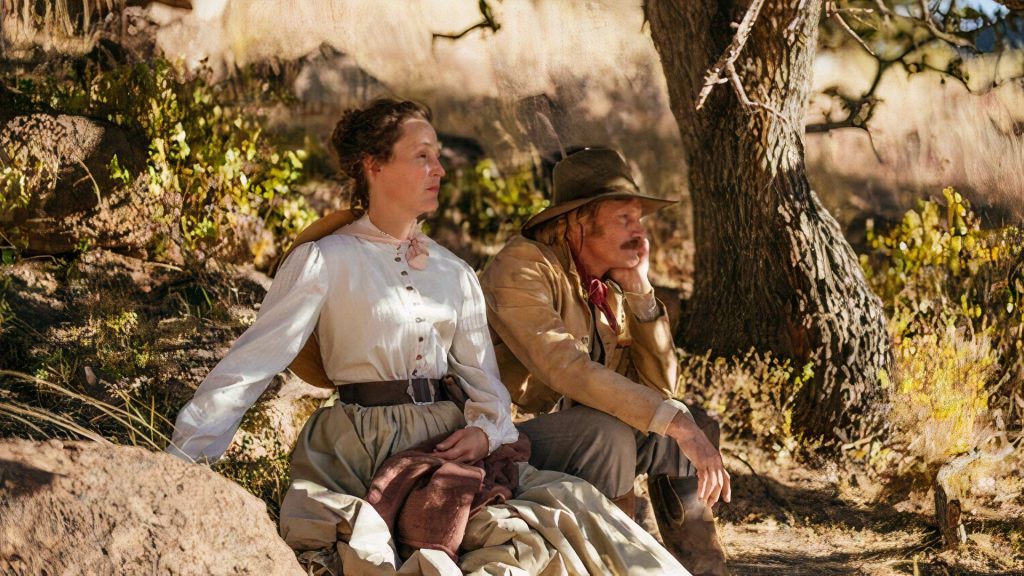Almost a decade ago, Mad Max: Fury Road catapulted its audience directly into the action, never feeling the need to explain anything about the nightmarish land we were flung into, from the flaming guitar-wielding Doof Warrior to the War Boys’ chrome spray paint huffing. Even though it was the fourth entry in the franchise, you could go into Fury Road cold and emerge in a wonderstruck daze without really understanding the larger context beyond a world gone to shit — and that’s all you really needed to know. With its deliriously demented post-apocalyptic action, Fury Road appealed to our animal brains while not insulting the more intellectual parts.
The first three films in George Miller’s Mad Max series in the ‘70s and ‘80s provide a bit of backstory for Tom Hardy’s Max, but Fury Road’s other — and far more interesting — hero, Furiosa (Charlize Theron) was an opaque mystery. The single biographical detail we knew was that she had been taken from the Green Place and longed to return. Furiosa: A Mad Max Saga serves as a prequel to show how Furiosa changes from the little girl in a land of abundance to a one-armed, grease-smeared warrior desperate to claw her way out of hell — and has to do so without ruining the mystique that made Furiosa an almost mythological figure from just a single appearance.
Part of that near-legendary status is due to Fury Road itself, a towering achievement in action cinema that ranks among this century’s greatest of any genre. However, a lot was due to Theron’s performance as the laconic badass. For Furiosa, Miller casts Anya Taylor-Joy, who is already a real star but isn’t known for the physicality that Theron brought to the part. In a movie filled with absolutely wild shit, Taylor-Joy’s presence as Furiosa is perhaps the most implausible element. Yet the actress playing Furiosa doesn’t detract from how spectacular Furiosa is overall.
Furiosa begins with the character as a child, played by Alyla Browne. After a motorcycle-riding grunt kidnaps her from an idyllic pocket of this nightmare, she is presented to the warlord Dementus (Chris Hemsworth), who claims her as his daughter. She eventually ends up in the clutches of The Immortan Joe (Lachy Hulme), as the two men struggle for power in a broken world with this young girl who they see only as a pawn. As Furiosa grows up, she only wants to find her way home to her people, and she’ll do anything to get there.
Taylor-Joy is ferocious enough in Furiosa’s quest, but the one significant improvement over Fury Road might be the addition of Hemsworth as the villain. His Dementus is astonishingly funny and weird and terrifying, an excellent foil to both Furiosa and The Immortan Joe. Whether starring in drama (Rush) or comedy (Thor: Ragnarok and the 2016 Ghostbusters), Hemsworth is a far better actor than he’s often given credit for. Some people likely underestimate him due to his good looks and hulking physique, the former of which he tries to cover up here with a thick beard and prosthetic nose.

Furiosa is a lot of things (it is also just a lot), but it’s never subtle. Furiosa’s clan is the Vulvalini, and The Immortan Joe’s sons are named Rictus Erectus (Nathan Jones) and — god help me — Scrotus (Josh Helman). (Side note: it is worth staying through the credits, not for the goofy, second-long post-credits scene, but to see all of the bonkers character names, which are more entertaining on their own than many entire movies.) Jenny Beavan’s costumes and Colin Gibson’s production designs create a cobbled-together world, where salvaged parts are the only way to make something whole. The legendary War Rig is assembled from a variety of sources, and the fashion is ancient Rome meets leather bar meets steampunk chic.
There are mutated monster trucks and massive motorcycles, and it is just glorious in every bit of its excess. Miller and action designer Guy Norris know how to make a relentless, innovative action sequence, never content to repeat even their own work from Fury Road or any other action movie. I was rapt for all of its 148 minutes. Its length and chapter divisions with titles like “Lessons from the Wasteland” give Furiosa an epic, operatic feel, as does the score from Tom Holkenborg, which is bombastic in the best of ways.
Yet Furiosa isn’t a lot of sound and fury, signifying nothing. In its opening moments, a voice asks, “As the world falls around us, how must we brave its cruelties?” It explores how humanity — both as a species and as a part of some individuals — survives amidst all this savagery. It isn’t only Furiosa’s courage and badassery that impresses us; it’s the connection she forges with those she encounters in this awful world that does not reward any softness. Her ability to care isn’t a vulnerability; it’s the source of her strength.
While Furiosa: A Mad Max Saga cannot quite fill the massive boots of its predecessor Fury Road, it comes admirably close, a feat for following one of the best films of the last few decades. This is a truly special franchise that refuses the pull of inertia to simply serve up a blockbuster that doesn’t challenge the audience. Instead, we’re given something truly original that even five films in feels like nothing we’ve ever seen before.
A-
“Furiosa: A Mad Max Saga” is in theaters this weekend.



